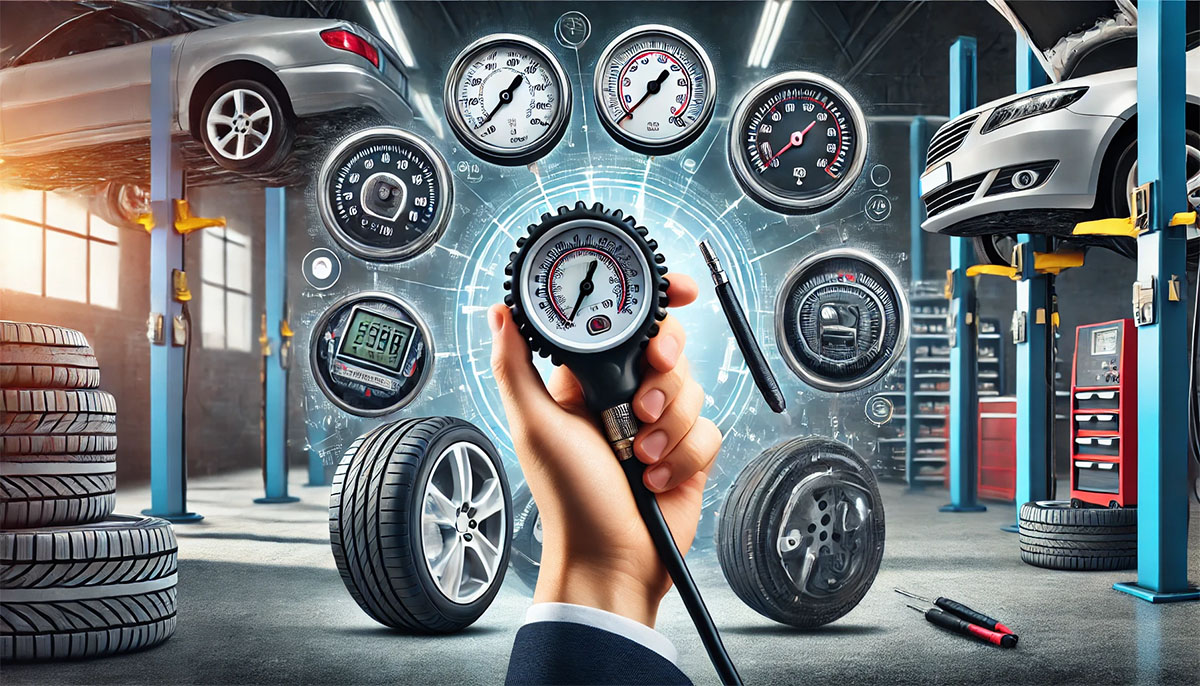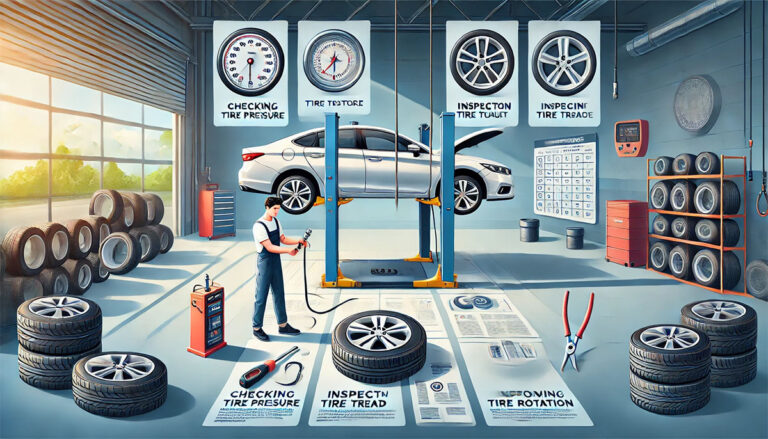Best Tire Pressure Gauges: The Ultimate Buying Guide (2025)
Monitoring tire pressure isn’t just about safety – it’s about saving money and extending your vehicle’s life! A shocking 42% of drivers never check their tire pressure, risking reduced fuel efficiency and potential tire damage. I’m here to help you find the perfect gauge to keep your wheels in top condition!
Types of Tire Pressure Gauges
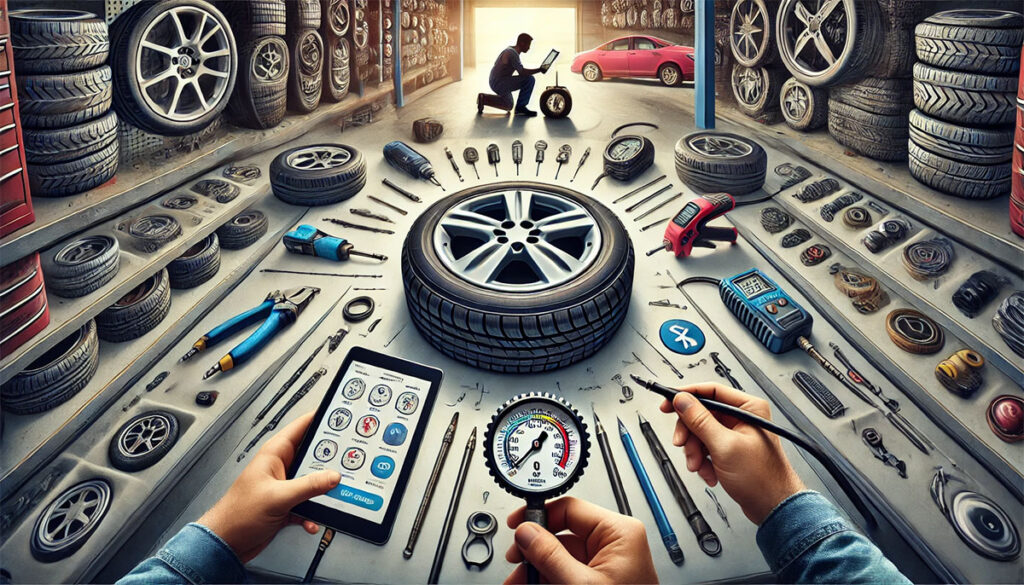
When it comes to checking tire pressure, there’s no one-size-fits-all tool. There are several types of tire pressure gauges out there, each offering its own benefits depending on what you need. Let’s break them down so you can figure out which one’s best for you!
Digital Gauges
Digital tire pressure gauges are all about precision and ease of use. With a simple push of a button, you get an exact reading displayed on a digital screen. They’re easy to read, even in low light, and some models have features like automatic shut-off to save battery life. If you want something that’s quick, accurate, and hassle-free, a digital gauge is a great choice. Plus, they usually give you the exact PSI (pounds per square inch) with no guesswork.
Analog Dial Gauges
If you prefer a more traditional, classic style, analog dial gauges might be your thing. These gauges use a needle and dial to show the tire pressure, and they’re known for their durability and simplicity. While they might not be as high-tech as digital ones, analog gauges are still very reliable. You’ll just need a bit more patience when reading the pressure, as it’s a manual process. They’re also usually more affordable than digital gauges, which is great if you’re on a budget.
Pencil-Style Gauges
Pencil-style gauges are small, compact, and easy to carry around. They’re a great choice for those who need a portable, no-frills option. This type of gauge typically works by inserting the metal rod into the valve stem, which then pops out to indicate the pressure. Pencil gauges are typically inexpensive and fairly accurate, but they might not be as easy to read as a dial or digital gauge. They’re perfect if you need something lightweight and simple to keep in your car.
Smart Bluetooth Gauges
For those who love tech, smart Bluetooth gauges are the way to go. These gauges connect to an app on your smartphone and give you tire pressure readings directly on your device. Some even alert you if the pressure is too high or too low. If you’re someone who wants a bit of high-tech convenience with your tire care, this option is a game-changer. They’re especially helpful for those who want to monitor tire pressure for multiple vehicles or regularly check their tires from the comfort of their phone.
Professional-Grade Gauges
If you want the best of the best, professional-grade tire pressure gauges are designed for heavy-duty use and extreme accuracy. They’re typically used by mechanics and auto shops but can also be useful for serious DIYers. These gauges usually come with features like heavy-duty construction, precision calibrations, and the ability to handle extreme pressure ranges. While they’re more expensive, they’re built to last and provide the most accurate readings, making them ideal for people who need a top-of-the-line tool.
Key Features to Consider
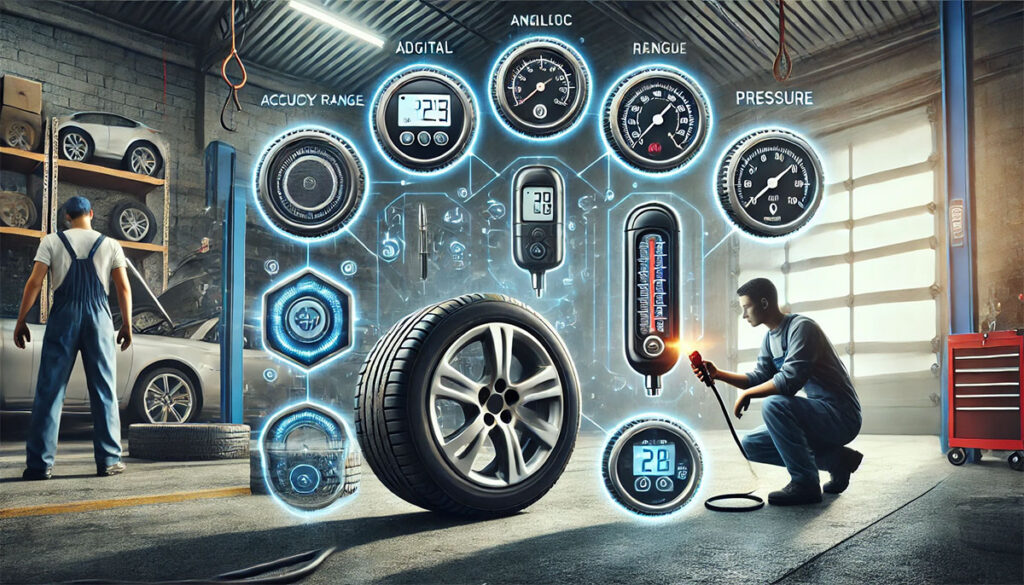
When choosing the right tire pressure gauge, it’s not just about picking the first one you see. You want to make sure it has the right features to fit your needs. Here’s what you should keep in mind before making your purchase.
Accuracy Ratings
Accuracy is everything when it comes to tire pressure gauges. After all, you’re checking your tire pressure to make sure your tires are safe and properly inflated. A gauge with poor accuracy can lead to over-inflation or under-inflation, which can affect your car’s performance and even your safety. Look for a gauge that gives you readings with a margin of error no larger than 1-2 PSI (pounds per square inch). Some gauges even come with a calibration certificate, which is a nice bonus if you’re really picky about precision.
Pressure Range
The pressure range is another important factor. Different vehicles require different pressure levels, and the range of your tire gauge should cover the specific needs of your car, motorcycle, or any other vehicle you plan to use it for. Most car tires fall within the 20-50 PSI range, but if you’re working with larger vehicles like trucks or RVs, you’ll need a gauge that can measure higher pressures. Make sure the gauge you choose has the correct range for your vehicle type!
Durability
Tire pressure gauges can be exposed to dirt, dust, moisture, and even drops, so durability matters! If you’re looking for a gauge that will last, choose one made from sturdy materials like stainless steel or high-quality plastic. Some models even come with rubber covers to protect them from damage. It’s worth investing in a durable gauge that can stand up to regular use, especially if you’re using it frequently.
Ease of Use
A great tire pressure gauge should be easy to use, even if you’ve never checked tire pressure before. Look for models with clear, easy-to-read displays (digital or analog) and simple controls. Digital gauges often come with a button to reset the measurement or automatically shut off to save battery. Pencil-style gauges are small and portable but might require a little more patience when reading the measurement. Choose the one that fits your comfort level and needs.
Additional Functions
Some tire pressure gauges come with extra features that might be useful, depending on your needs. For example, smart Bluetooth gauges sync with your phone to give you a reading, while some digital gauges have built-in lights for checking tire pressure in the dark. Others may offer automatic pressure checking or multiple unit conversions (like bar, kPa, or PSI). Think about whether these extras are something you’d use and if they’ll make your life a little easier.
Top-Rated Tire Pressure Gauges
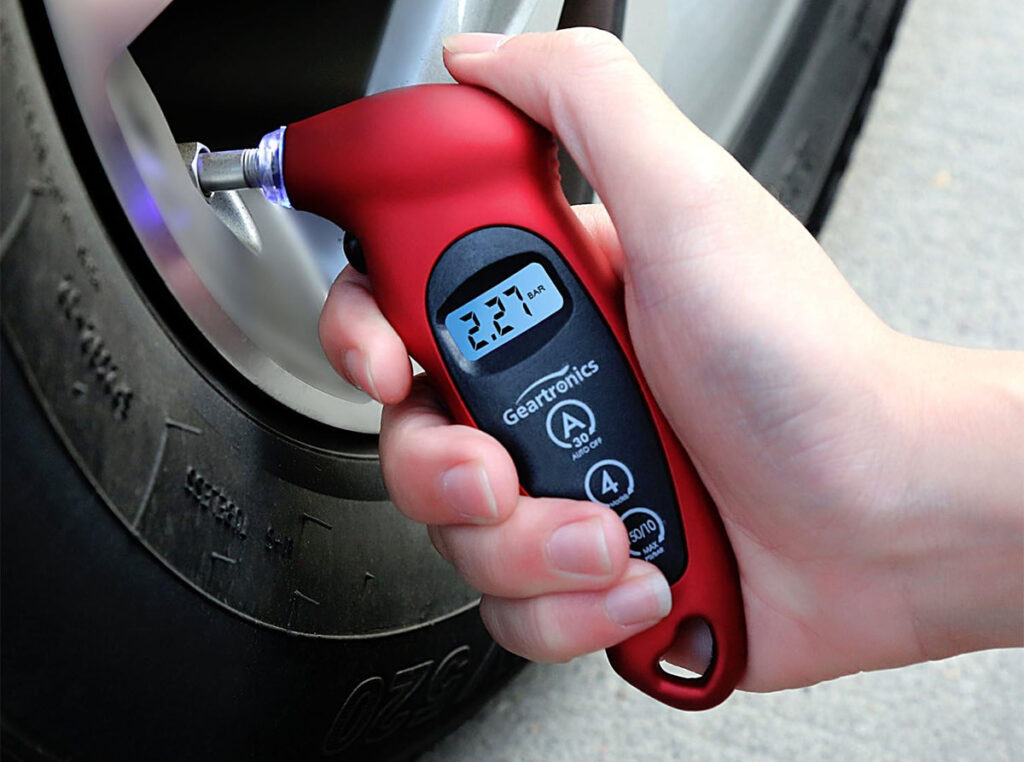
Picking the right tire pressure gauge is key to making sure your tires are always in good shape. Whether you’re a casual driver or a car enthusiast, you need a reliable tool to keep your tire pressure in check. Let’s dive into the top-rated options out there, so you can choose the best one for you!
Best Digital Gauge
If you’re all about precision and ease of use, digital tire pressure gauges are where it’s at! These bad boys are perfect for quick, accurate readings, and they’re super easy to read, even in low light. No more squinting at tiny numbers! The best digital gauges usually feature an LCD display, are highly accurate, and offer handy features like auto shut-off to save battery life.
I personally love the Accutire MS-4021B Digital Tire Gauge – it’s affordable, reliable, and gives you the exact PSI every time. Plus, it has a backlit display, so you can check your tire pressure anytime, anywhere!
Most Accurate Gauge
When accuracy is your #1 priority (because who wants to guess tire pressure?), the Intercomp 360 Digital Tire Pressure Gauge is a serious contender. This gauge gives you precise readings to the exact PSI. It’s super consistent and reliable, making it ideal for those who need the most accurate results. Plus, it’s built to last and works great for all vehicle types, from cars to trucks.
I’ve found that this one is perfect for anyone who’s a stickler about getting the exact pressure for each tire. A high-accuracy gauge can save you on gas mileage and prevent premature tire wear. Totally worth it!
Budget-Friendly Option
Hey, not everyone needs a high-tech gadget to get the job done, right? If you’re on a budget but still want a good, reliable gauge, I’d recommend the JACO ElitePro Digital Tire Pressure Gauge. It’s affordable, easy to use, and still gives you a great reading. This one might not have all the bells and whistles of more expensive models, but it’s accurate, durable, and simple—perfect for those who just need the basics.
Professional Mechanic Choice
If you’re a professional or you want something that can handle heavy-duty use, the Longacre 52-53006 Econo Digital Tire Gauge is top-notch. This is the one you’ll often see in professional mechanic shops or race teams. It’s durable, easy to calibrate, and gives precise readings that professionals trust.
Not only is it rugged enough for constant use, but it also comes with features like a bleeder valve for letting air out, so you can fine-tune your tire pressure. It’s a great investment for anyone who takes tire maintenance seriously.
Best Smart Technology Gauge
For those of you who love all things tech, the TireMinder Smart Bluetooth Tire Pressure Monitoring System is a game-changer. This high-tech gauge connects to your smartphone and gives you real-time tire pressure readings, along with alerts if something’s off. It’s like having a tire expert in your pocket!
The Bluetooth feature is a huge bonus if you want to monitor your tires while on the go. Just sync it to your phone, and you’ll get alerts when it’s time to top off the pressure. I’d definitely recommend this for anyone looking to get a little more techy with their tire care.
How to Use a Tire Pressure Gauge
Using a tire pressure gauge is easier than you think! Whether you’re a newbie or just need a refresher, knowing the right technique and tips will keep your tires in tip-top shape. Let’s go through the steps, so you can check your tire pressure like a pro!
Proper Checking Technique
First things first, let’s talk about the right technique. Here’s the basic step-by-step process for using a tire pressure gauge:
- Remove the valve cap: Start by unscrewing the valve cap on the tire’s valve stem. Keep it somewhere safe so you don’t lose it!
- Press the gauge onto the valve stem: Place the nozzle of your gauge firmly onto the valve stem. You want to make sure it’s a snug fit, but don’t press too hard or too soft. If you hear air hissing, you’re not pressing hard enough.
- Read the result: The gauge will give you a reading. With digital gauges, it’ll show up on a screen, while analog ones will show the reading on a dial. Pencil-style gauges work by pushing out a metal rod that shows the pressure level.
- Replace the valve cap: Once you’ve noted the pressure, replace the valve cap to prevent dirt from getting in.
It’s that easy! Just remember, accuracy is key, so make sure you’re using a good quality gauge.
Frequency of Checks
How often should you be checking your tire pressure? Well, it’s a good idea to check at least once a month—but if you’re about to go on a long trip, or if you notice your car feels a little “off,” it’s worth doing it more often. Temperature changes can affect tire pressure, so especially when the weather shifts (from hot to cold or vice versa), it’s a good idea to check.
Remember, your tire pressure can drop by about 1-2 PSI for every 10°F drop in temperature, so if you live in a place where it gets really hot or really cold, you might want to check a little more frequently.
Interpreting Readings
Now, what do you do when you get the reading? Here’s how to interpret it:
- Compare it with your car’s recommended tire pressure: You can usually find this info inside your car’s door frame (on the driver’s side) or in the owner’s manual. Most car tires will be between 30-35 PSI, but check to be sure!
- Under-inflated tires: If the pressure is too low, your tires are under-inflated. This can cause poor handling and lower fuel efficiency, so you’ll need to add air.
- Over-inflated tires: If the pressure is too high, your tires are over-inflated. This can make the ride uncomfortable, cause uneven wear, and reduce traction, so you’ll need to release some air.
If your tire pressure is within the recommended range, you’re good to go!
Calibration Methods
Tire pressure gauges, especially analog ones, can lose their accuracy over time. So how do you make sure yours is calibrated properly? Here’s how:
- Use a reference gauge: Take your gauge to a professional tire shop or auto repair shop. They usually have a high-quality reference gauge that they can use to compare and calibrate your tool.
- Manual calibration: Some gauges allow for manual calibration. Check the user manual to see if this is an option. It might involve adjusting a screw or using a specific calibration tool.
Regular calibration ensures your gauge is still giving you the most accurate readings.
Maintenance Tips
To keep your tire pressure gauge working properly for a long time, follow these maintenance tips:
- Store it properly: Keep your gauge in a dry, cool place to avoid damaging the internal mechanisms. If you’re using a digital gauge, remove the batteries if you won’t be using it for a while to avoid corrosion.
- Clean it after use: After checking your tire pressure, wipe off any dirt or grime to keep your gauge in top shape. This is especially important for digital and analog gauges, as dirt can interfere with readings.
- Check for damage: Inspect your gauge regularly for signs of wear or damage, like cracks in the casing or a loose dial. A damaged gauge won’t give you accurate readings!
Taking care of your tire pressure gauge means it’ll take care of your tires—and your vehicle’s performance!
Troubleshooting and Maintenance
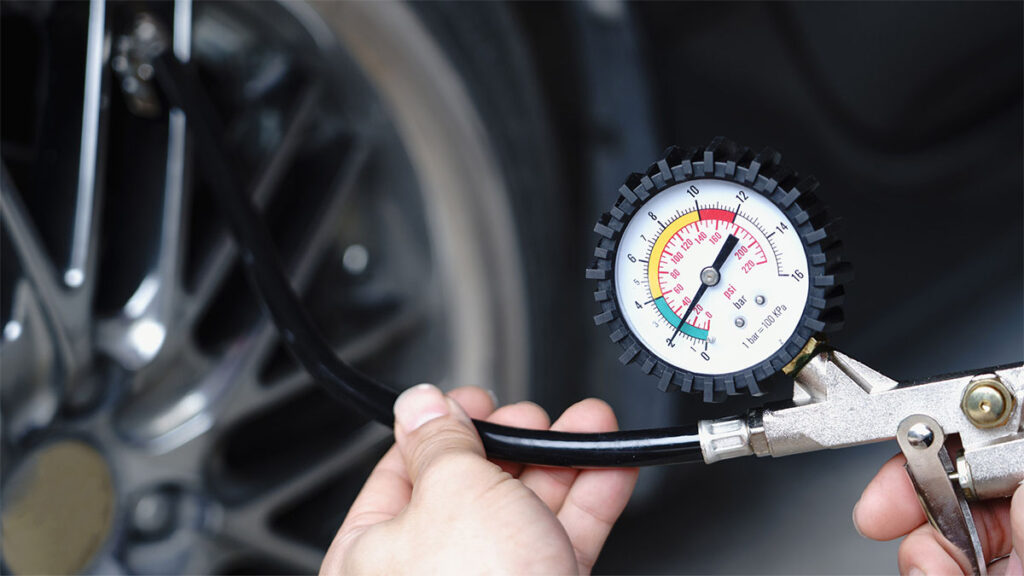
Tire pressure gauges are pretty reliable, but like any tool, they can sometimes act up. Don’t worry though! If your gauge is giving you trouble or acting weird, there are some simple fixes. Plus, regular maintenance can keep your gauge running smoothly for years. Let’s go over some common issues and tips for keeping your gauge in tip-top shape.
Common Reading Errors
Sometimes, your gauge might give you a reading that doesn’t quite make sense. It happens! But what do you do if that happens?
- Incorrect fit: Make sure you’re pressing the gauge firmly onto the valve stem. If it’s not seated properly, you might get a false reading. You should hear a hissing sound if the air’s escaping, so be sure to get a tight seal.
- Air leakage: If your tire’s valve stem is leaking air, your gauge could give an inaccurate reading. Try replacing the valve stem if you suspect it’s the problem.
- Wrong reading angle: On analog gauges, make sure the needle is reading from the right angle. A slightly off angle can distort the reading, especially on cheaper models.
- Faulty gauge: If your gauge is giving inconsistent readings every time you check, it could be faulty. Calibration might fix the issue, but if it’s still acting up, it might be time to get a new one.
Gauge Care
Taking care of your tire pressure gauge is key to ensuring it lasts and continues to give accurate readings. Here’s how:
- Clean it after use: Dirt and grime can mess with the mechanism inside your gauge. Wipe it down with a clean cloth after every use, especially around the nozzle, so it stays in good condition.
- Avoid dropping it: Your gauge is a precision tool, so dropping it can mess with its accuracy or break the internal parts. Be gentle with it, and always store it in a safe place.
- Check for rust: If you’re using a metal gauge, rust can build up over time. Make sure you dry it off completely after exposure to moisture to avoid any rusting. For digital gauges, make sure the connections stay clean!
Battery Replacement
If your digital gauge is showing a dim screen or not turning on, it’s probably time to replace the battery. Here’s what to do:
- Open the battery compartment: Most digital tire gauges have a small compartment at the back or side. Use a small screwdriver to open it up.
- Use the right battery type: Check the battery type (usually coin cell or AA) and replace it with the correct one. Make sure to dispose of the old battery properly!
- Test after replacing: Once the new battery is in, test the gauge to make sure it’s working correctly. If it still doesn’t turn on, double-check that the battery is inserted correctly and that there’s no corrosion in the compartment.
Accuracy Verification
If your tire pressure gauge is acting funny or you’re just not sure if it’s still accurate, you can verify its accuracy:
- Use a reference gauge: Take your gauge to a shop or tire center that uses a professional-grade tool. Have them compare readings and check if your gauge is off. Some auto shops even offer free accuracy checks.
- Use the same gauge multiple times: If your gauge is giving different readings every time you use it, it could be off. A good way to test its consistency is to check the same tire multiple times in a row. If the readings are all over the place, it’s time for a calibration or replacement.
Storage Recommendations
Proper storage can extend the life of your tire pressure gauge. Here are some tips for keeping it in top shape:
- Keep it in a dry place: Moisture can damage your gauge, especially if it’s digital. Store it in a dry place, away from extreme temperatures, as heat or cold can mess with the readings.
- Store in a case: Some gauges come with a small storage case. If yours didn’t, consider buying one to protect it from dust, dirt, or accidental drops.
- Avoid sunlight: Don’t leave your gauge out in the sun for too long, especially if it’s digital. UV rays can fade the screen or cause other damage.
Conclusion
The right tire pressure gauge is your key to vehicle safety and performance. Invest in a quality gauge and make tire maintenance a regular habit!

